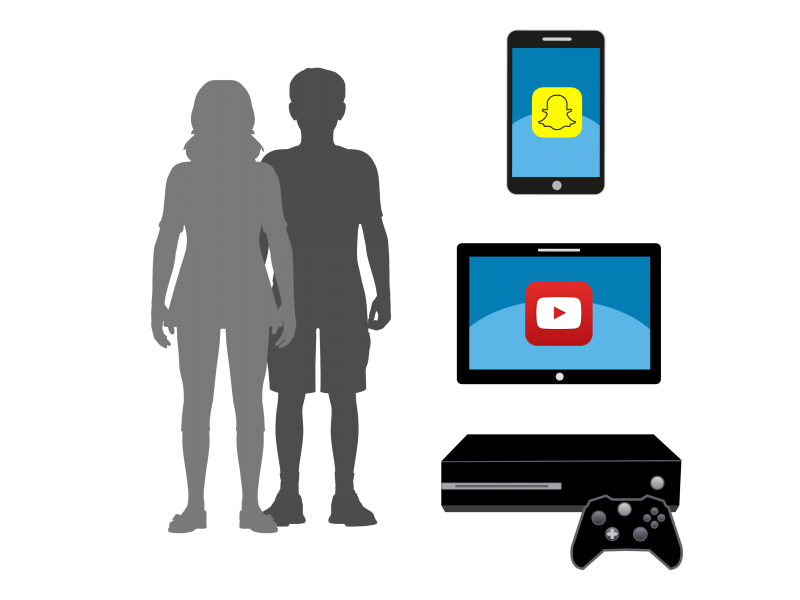
Kids and Family Members
Samsung to begin investing in new domestic memory chip line: Yonhap
February 6, 2018Apple brings Alibaba-linked payment system into China stores amid market push
February 6, 2018This post was originally published on this site
Background
The number of ways children today can go online and interact with others is staggering. From new social media apps and games to schools issuing Chromebooks, kids’ social lives and futures depend on their ability to make the most of technology. As parents, we want to make sure they do so in a safe and secure manner. However, this can be a challenge, as many of us never grew up in a technical environment like this. To help you, we cover the key steps to enabling today’s kids to make the most of technology safely and securely.
Education/Communication

The key to protecting kids online is to education them and make sure that you talk to them and they talk to you.
The number one step you can take is communication; make sure you are always talking to your kids and they are talking to you. Far too often, parents get caught up in the technology, asking questions such as, “What apps are good or bad,” or “What is the best kids’ security software.” Ultimately, this is not a technology challenge, but a behavior and values challenge. We want kids to behave online as they would in the real world. A good place to start is to create a list of rules or expectations with your kids on how they should use technology. Here are some things to consider: (Remember, these rules will evolve as kids get older.)
- Times when they can or cannot go online, and for how long.
- Ask your children who their online friends or followers are, and how they become friends. Do they actually know the people that they are connected to online?
- Talk about the types of websites they should or should not visit, games that are appropriate or not, and why.
- What information they can share and with whom. Children often do not realize what they post is permanent and public. In addition, they may think they are sharing a secret with just one person, but that secret can easily be shared with the world.
- Who they should report problems to, such as if someone online is being a bully or creepy.
- Treat others online as they would want to be treated themselves.
- There is no anonymity online; people can find out who you are.
- People online may not be who they claim to be.
For older children, one option is to tie these rules to their academic grades, completion of chores, or how they treat others. The better their behavior in the real world, the more they can do online. Once you decide on the rules, post them by the family computer or your child’s bedroom door. Even better, have them review and sign the document. That way, everyone is in full agreement. The earlier you start talking to your kids about your expectations, the better. Not sure how to start the conversation, especially with older kids? Ask them what apps they are using and how they work. Put your child in the role of teacher and have them show you what they are doing online.
Technology
In addition to education, there are technologies you can use to monitor and help protect your kids. We find that technical solutions work best for younger children, especially protecting them from accidentally accessing inappropriate or harmful content. However, technical controls do not work as well as children get older. Older kids not only need more access to the Internet, but often use devices that you do not control or cannot monitor, such as those issued by school, gaming consoles, or computers at a friend’s or relative’s house. This is why education is so important.
Another step is to have a dedicated computer just for your kids. This way, they cannot accidentally infect your computer, which you may use for sensitive activities, such as banking online or taxes. In addition, keep their computer in a public, high-traffic area so their activities can be monitored. Just because they say they are doing homework does not mean they are actually doing homework. Finally, make sure the computer is secured, routinely backed up, and your children do not have administrator rights to it. For mobile devices, consider a central charging station somewhere in your house. Before your children go to bed at night, have all mobile devices placed at the charging station so your children are not tempted to use them when they should be sleeping.
Leading by Example
Do not forget that we also need to set a good example as parents. This means that when your kids talk to you, put your own digital device down and look them in the eye. Consider not using digital devices at the dinner table and never text while driving. Finally, when kids make mistakes, treat each one as an experience to learn from instead of engaging in an immediate disciplinary action. Explain “why” each time and remind them that you are only trying to protect them from the dangers they cannot yet see. Let them know they can come to you if and when they experience anything uncomfortable online, perhaps even have them take a screenshot to share with you. Make sure they also feel comfortable approaching you when they realize they themselves have done something inappropriate. Keeping communication open and active is the best way to help kids stay safe in today’s digital world.
